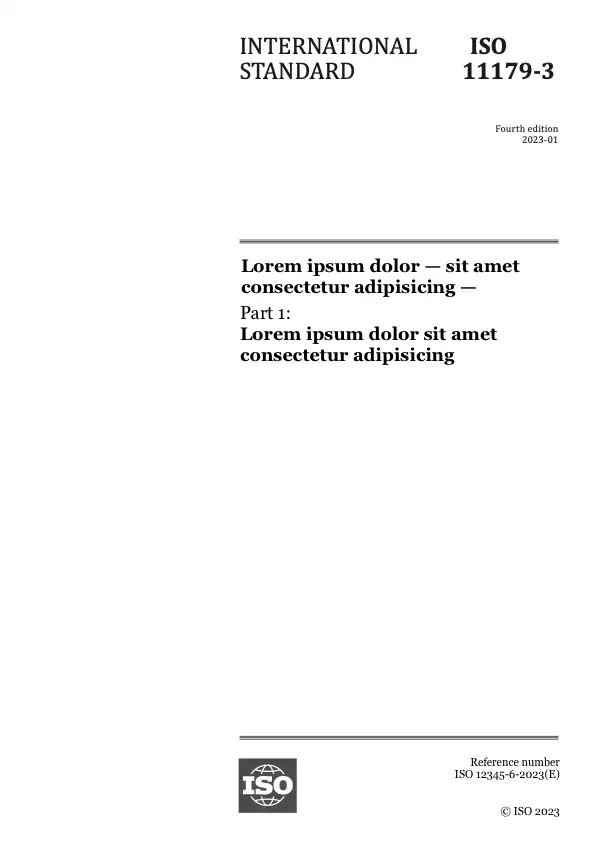Abstract
This International Standard specifies a method for the determination of the vapour pressure of liquid petroleum
products consisting of essentially or wholly of hydrocarbon components, or containing oxygenated hydrocarbons of
specific types and at specified maximum concentrations. The method does not apply outside these concentration
levels, nor to any blends containing methanol or other oxygenated hydrocarbons not covered in note 1.
NOTE 1 The maximum concentration of ethers containing 5 or more carbon atoms is 15 % (V/V), and for ethanol is 10 %
(V/V). For higher alcohols, the maximum concentration is 7 % (V/V).
NOTE 2 For the purposes of this International Standard, the term "%(V/V)" is used to represent the volume fraction of a
material.
For petroleum products containing methanol, or other oxygenated hydrocarbons outside the scope of note 1, a dry
vapour-pressure test method should be used. For liquefied petroleum gases, ISO 4256 should be used. The test
method may be applied to volatile crude petroleum with a vapour pressure exceeding 10 kPa, although the
precision has not been evaluated.
Four procedures are described in this International Standard. Procedures A and B are alternative apparatus
configurations for products with a Reid vapour pressure up to 180 kPa, Procedure C is applied to liquid products
with a Reid vapour pressure above 180 kPa, and Procedure D applies to aviation gasolines with a Reid vapour
pressure of approximately 50 kPa.
Vapour pressure is an important physical property of volatile liquids, and has critical performance implications for
automotive and aviation gasolines. Vapour pressure is also one of the properties affecting atmospheric evaporation,
and is therefore increasingly used in regulations relating to emissions and air quality control. Vapour pressure is
also a critical property limiting the performance and safety of operation of equipment during transfer operations.
NOTE Because the external atmospheric pressure is counteracted by the atmospheric pressure initially in the vapour
chamber, the Reid vapour pressure is approximately the "absolute" vapour pressure at 37,8 °C. The Reid vapour pressure
differs from the true vapour pressure of the sample owing to slight vaporization of the sample and the pressure of water vapour
and air in the confined space.
Read sample
General information
Life cycle
-
Previously
WithdrawnISO 3007:1986
-
Now
Got a question?
Check out our FAQs
Opening hours:
Monday to Friday - 09:00-12:00, 14:00-17:00 (UTC+1)

